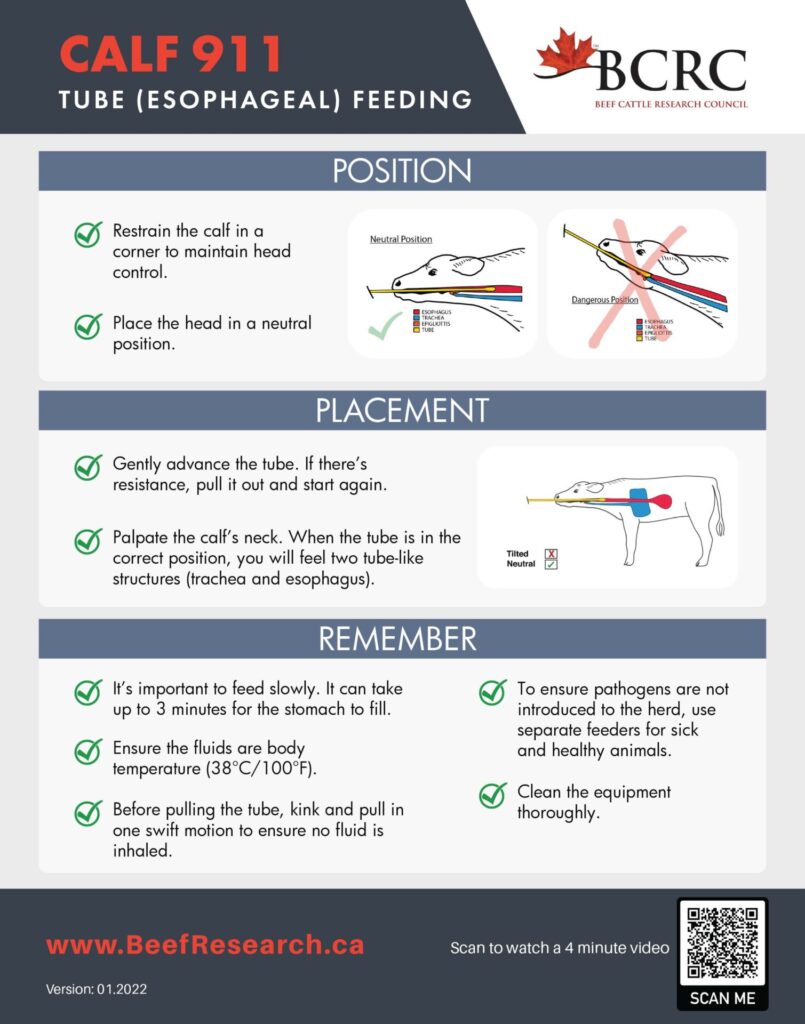Calf 911 – The Ins and Outs of Esophageal Feeding ▶️
While the goal is to always have vigorous calves that nurse right away, and maternal cows that bring them up right, illness and suckling issues can be a reality. Esophageal feeding, also known as “tube feeding” or “stomach feeding,” is essential when a calf requires colostrum or if you are treating dehydration in a sick calf. Knowing how to properly tube feed a calf is critical to help support calves when they are at their most vulnerable. Here are a few tips to consider while tube feeding calves:
- Always have two esophageal feeders: one designated for sick calves and the other for feeding colostrum to healthy calves. This will prevent disease and pathogen transmission from sick to healthy calves.
- Prevent aspiration (fluid in the lungs) with proper positioning. The calf can be standing, sitting or lying down with the head in a neutral position above the stomach.
- Open the mouth and pass the empty tube over the tongue to the back of the mouth. Allow the calf to swallow the tube so that it easily passes into the esophagus.
- NEVER force the tube down. If there is resistance, pull the tube out and try again.
- Remember the “Two-Tube Rule”:
- Once the tube is placed, you should be able to easily palpate both the rigid, enlarged esophagus and the rings of the trachea (windpipe). If both cannot be felt, you do not have proper positioning. Remove the tube and start again.
- Liquid being fed should always be at body temperature or 38°C (100°F) to prevent shock in an already weak calf.
- Allow the feeder to empty slowly. This can take upwards of three minutes. Slow feeding will reduce the risk of regurgitation, preventing aspiration into the lungs.
- Clip or kink the tube after feeding to prevent excess fluids from draining as the tube is being pulled out. Not doing this could result in aspiration (fluid in the lungs).
- Clean and sanitize the tube and feeding apparatus after every feeding.
It can be stressful when a calf needs to be tube fed. However, understanding proper technique and the physiology behind it can not only save lives, but also will improve the overall health of your herd.
For more information, please visit our Calving and Calf Management webpage.
This post is part of our #Calf911 series. Read more in the series or watch more videos.
Click here to subscribe to the BCRC Blog and receive email notifications when new content is posted.
The sharing or reprinting of BCRC Blog articles is welcome and encouraged. Please provide acknowledgement to the Beef Cattle Research Council, list the website address, www.BeefResearch.ca, and let us know you chose to share the article by emailing us at [email protected].
We welcome your questions, comments and suggestions. Contact us directly or generate public discussion by posting your thoughts below.
